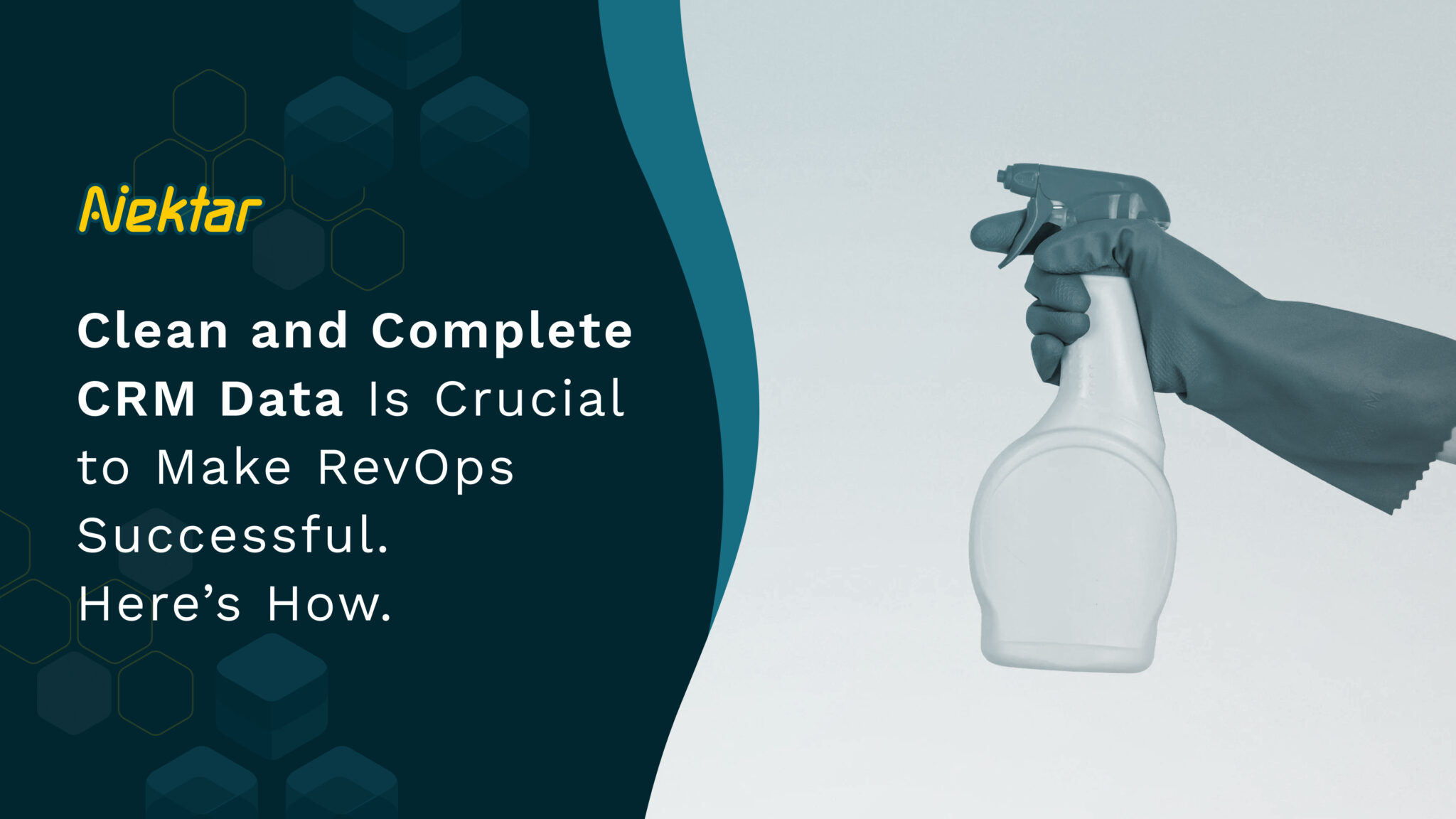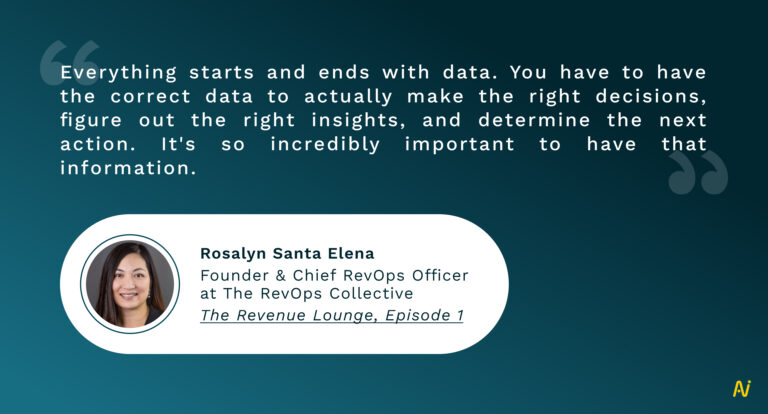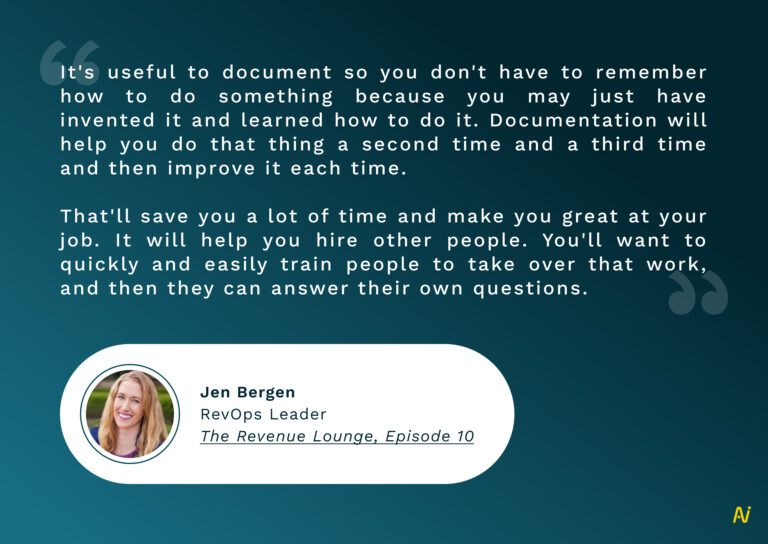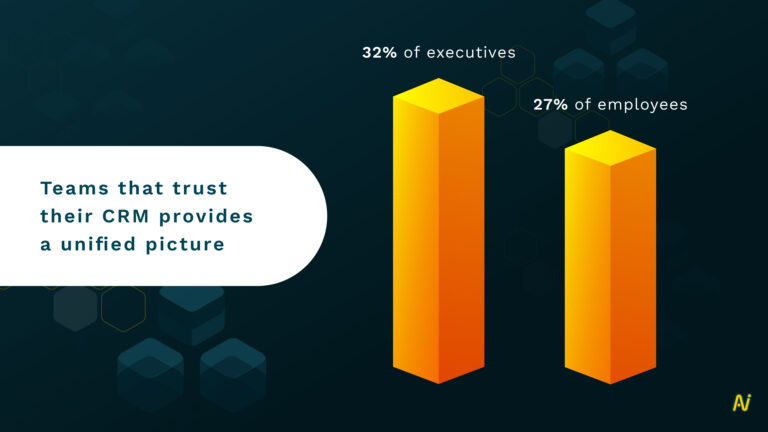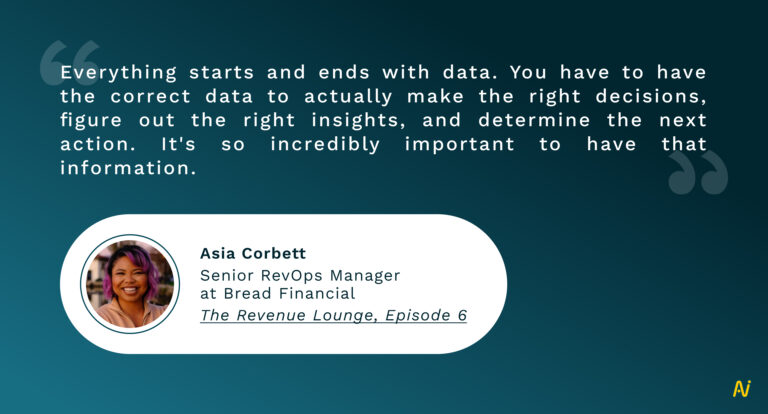Revenue Operations or RevOps has seen quick adoption across businesses in the last few years, particularly in the SaaS industry.
Organizations go for it because it accelerates revenue growth and go-to-market (GTM) efficiency by centralizing operations. It supports revenue-generating teams (including sales, marketing, and customer success) and their processes, systems, technologies, and reporting analytics.
The end objective of RevOps is to ensure that no teams work in silos but win deals by putting on a unified front.
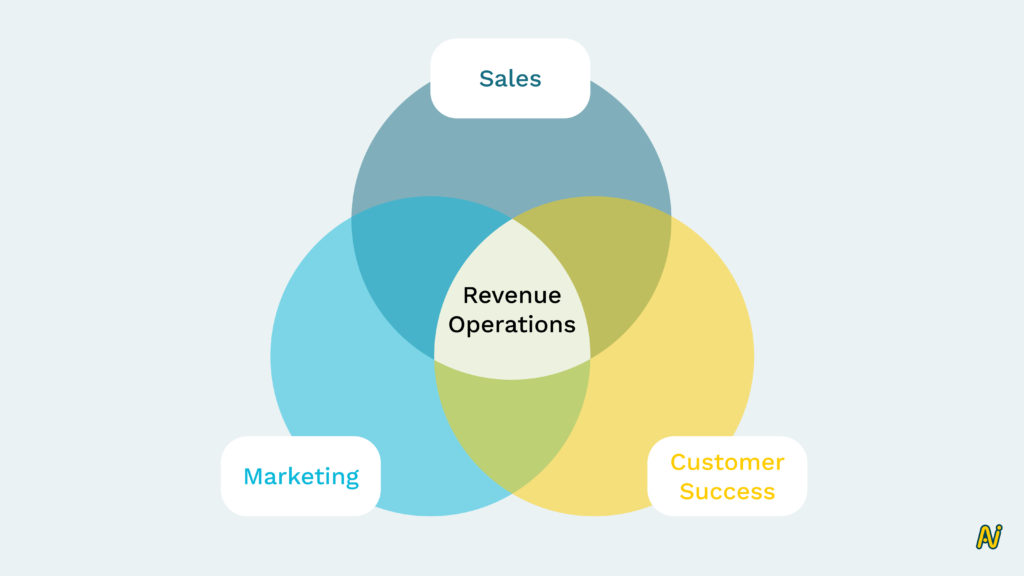
Since cross-functional alignment is what RevOps is primarily about, it’s only strategic for revenue leaders to start with the CRM – where all customer and prospect data is stored in one place and can be used to drive better decisions across the organization.
But data leaks can be a troublesome cog in the RevOps wheel. Data leaks occur when inaccurate, poor quality, incomplete and faulty sales data enters the CRM.
Without clean and complete data, the CRM system can’t truly achieve what it set out to do:
- Build a data-driven system of generating insights
- Develop a deeper understanding of the market
- Lay down the next best steps for sales teams, enabling them to sell quicker and better
Instead, it stays stagnant and unreliable. And if you feel you’re the only one facing problems, CRM data leakage is an industry-wide problem.

Today’s RevOps teams can’t rely on flawed data to generate more revenue. Clean, complete and accurate CRM data is no longer something to aspire for. It’s table stakes for revenue generation.
Why Plugging CRM Data Leakage Matters for RevOps Success
Here are four scenarios that validate the importance of clean and complete CRM data for successful RevOps.
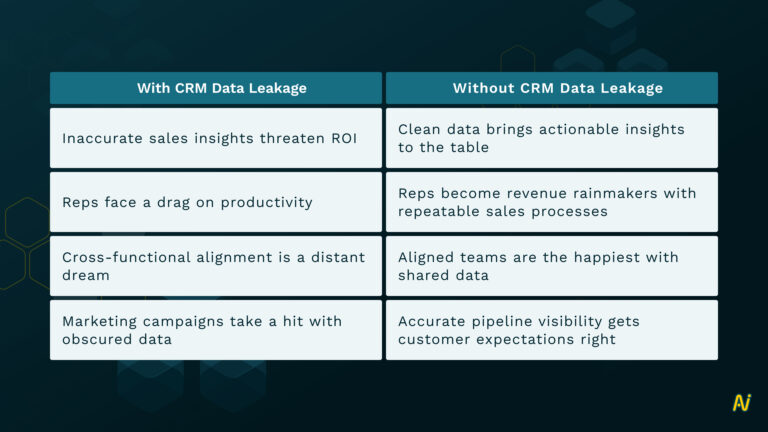
Let’s take a deeper look at the various scenarios that can emerge with or without clean and complete CRM data. These comparisons will help you understand how RevOps gets impacted. Let’s compare:
Comparison 1
With CRM Data Leakage: Inaccurate Sales Insights Threaten ROI
Data is of no consequence if it’s only gathered but not processed for insights. That’s why sales forecasting is a crucial activity for RevOps. It places revenue leaders in a better position to strategically direct resources to the right areas for the best and most profitable results.
However, it’s worrying that nearly 70% of revenue leaders aren’t confident of the accuracy of their CRM data. If you’re not convinced, you can’t make decisions based on insights from the CRM and can’t allocate resources optimally.
Revenue leaders need access to historical data to make sales forecasts. Add to that, you must also have complete visibility of current opportunities in the pipeline and corresponding contacts with notifications on deal progress. Poor data limits this visibility, so leaders don’t know at what stage deals are, which ones are more likely to close and which ones need special attention.
All of this results in the following:
- Longer sales cycles
- Missed quotas
- An unclear picture of deal progress
It only makes predicting sales figures an ambiguous, unreliable exercise as there’s over-reliance on humans to sort through mounds of data. It’s well known that humans alone can’t make the most of data. Our tendencies of guesswork and instinct are no good for forecasting and decision-making.
Ultimately, a lack of connection between account and contact data sources in the CRM stalls real-time updates and delays important news or deal changes, affecting sales forecasting.
Without CRM Data Leakage: Clean Data Brings Actionable Insights to the Table
Clean, complete, and reliable data in the CRM is the first step in achieving accurate sales forecasting.
Staying abreast of the right moments gives reps superior capabilities to personalize buyer experiences, opening up the possibility of continued engagement. Real-time insights enable GTM functions to meet customer expectations and drive successful RevOps results.
What’s more, clean data also allows reps to formulate the next best steps that could win a deal with the best ROI. Deep sales intelligence drives deal prioritization and helps develop actionable selling workflows. It also provides dynamic signals for changes in a deal, such as funding, intent, new buyers on the committee, and others.
A reliable CRM makes things easy for revenue leaders. You can use sales intelligence in a structured format that’s easily accessible anytime. Enriched CRM data weeds out irrelevant information to give you more qualitative insights into the Ideal Customer Profile (ICP), fuelling optimized scalability.
Then there’s data-backed coaching that has its own set of benefits. Deal reviews between managers and reps are based on information in the CRM. If this data is inaccurate or incomplete, the chances of a review going south are higher.
With clean and complete data, deal reviews turn into fruitful sessions with constructive feedback rather than interrogations. Managers can then use deal reviews as customized coaching sessions for each rep.
Sellers who receive tailored coaching based on their performance are 1.3 times more likely to do better than competitors.
Comparison 2
With CRM Data Leakage: Reps Face a Drag on Productivity
A B2B salesperson’s day is typically packed with countless tasks
- Follow-ups
- Endless meetings
- Research & discovery
- Sales demos
- Navigating buying committees
- Facing off with competition
- Handling internal reviews
Imagine having to add more to this list. For sales reps, it can get pretty taxing pretty fast.
It’s unsurprising, then, that manual data entry into the CRM creates friction between man and machine. You may want reps to update the system regularly so you can derive insights for decision-making. On the other hand, they feel the task is a waste of time or find it too complex to do every day.
CRM data leakage doesn’t help reps do their jobs better. Instead, it takes away precious time they could spend on their core responsibility – selling and filling the revenue bags.
Manual data entry also heightens the risk of inaccurate data in the CRM, which ultimately affects rep productivity. They waste time looking for the right contact or deal information instead of holding a productive conversation with the prospect.
CRM data leakage could also result in erroneous data stored, having even worse consequences. Reps may contact the wrong person or send the wrong pitch entirely. Undoubtedly, that affects RevOps’s success.
Outdated CRM user interfaces give reps even less incentive to update them.
It leads to poor adoption of the CRM, bogging down rep productivity and gravely affecting sales deals.
Without CRM Data Leakage: Reps Become Rainmakers With Repeatable Sales Processes
With high-quality data, reps better understand the ICP’s requirements and double down on the information they collect from prospects. They can use this data to create a repeatable exercise and market your solutions, documenting processes that work for future reference and deal success.
Documented processes develop better policies to drive CRM adoption further and use the system to glean the best insights. Reps can leverage this data, review it and repurpose it to ensure they reach out to the right people at the right time using the right process.
Thanks to a sales tech stack with no CRM data leakage, you have the necessary tools to build a roadmap for your reps. This roadmap can chart the customer journey end-to-end in the sales funnel, giving your reps complete visibility on ongoing deals.
It can be leveraged to introduce your reps to guided selling based on accurate data. Guided selling tracks buyer signals, nudging your reps towards better sales behaviour and the next best steps to close a deal.
You can also encourage reps to use automation for solving data leaks and promote better productivity by not letting them spend time on manual work.
Thus, clean and complete data improves sellers’ engagement with buyers, giving them the confidence to win more deals.
Comparison 3
With CRM Data Leakage: Cross-Functional Alignment Is a Distant Dream
Most of the problems stemming from misalignment between frontline teams have little to do with the CRM’s functionality and more to do with the poor quality of data in the system.
Only 32% of executives and 27% of employees trust that their CRM provides a unified view of customer information.
CRM data leakage resulting in inaccurate and incomplete data leaves the GTM funnel in disarray, mainly when marketing and sales teams follow different CRM systems or a disintegrated tech stack.
Today’s business environment is changing quickly. Marketing and sales teams may find it difficult to regularly update the CRM with new information, missing out on complete contact details. Instead, they prefer filling in just the mandatory fields. Moreover, each team refers to its own set of information and goals, splitting the data into silos.
Down the road, it doesn’t give adequate information on prospects. As a result, frontline teams don’t have sufficient insights into their ICP, which could lead to them ending up in an abyss of failed marketing campaigns.
For instance, a prospect may be interested in purchasing your solution and need more information to complete the sale. The deal is now stuck in the pipeline without marketing knowing because of incomplete visibility. If the team had followed the deal closely or had the right deal signals, it could have helped sales close the deal by simply sending a case study relevant to the buyer’s need.
CRM data leakage also affects lead scoring. When marketing and sales teams follow different goals and data, they don’t follow a uniform process for scoring. This creates friction when handing over qualified leads from marketing to sales.
Without CRM Data Leakage: Aligned Teams Are the Happiest With Shared Data
Cross-functional teams are 14% more likely to provide an exceptional customer experience when they use a shared CRM.
The better the quality of CRM data, the more solid the foundation of customer intelligence and insights. The more solid this foundation, the more effective sales, and marketing performance.
When they’re aligned, sales and marketing know exactly what customers expect. They use this knowledge to deliver the best buyer interaction every single time. It works out positively for everyone in the organization because positive customer experiences fuel loyalty and repurchase, increasing their lifetime value (LTV).
Positive customer experience = Loyalty & Repurchase = Higher LTV
Marketing, particularly, uses clean data to
- Identify customer pain points
- Prioritize buyer needs
- Evaluate prospect interactions
- Run tailored campaigns that bring in higher conversions
Cross-functional alignment allows teams to eliminate data silos, capture information at every touchpoint, and chase shared goals. In doing so, frontline teams can push prospects successfully through the sales funnel with minimal friction during lead handoff.
A smoother buying experience guarantees predictable revenue.
Comparison 4
With CRM Data Leakage: Marketing Campaigns Take a Hit With Obscured Data
Powerful marketing campaigns rely heavily on CRM data quality to interact with buyers and personalize the purchase experience. But poor data is an obstacle to getting this perfect.
The modern buyer is not an individual but a buying committee of key stakeholders. And so, marketing campaigns can’t follow a spray-and-pray approach.
Frontline teams must reach out to multiple stakeholders with customized content, leveraging marketing resources and sales playbooks using laser focus. However, not cleaning data over time bloats the sales pipeline with opportunities of little value.
While reps may feel that the bigger the pipeline, the more profitable buyer interactions they get. But it’s quite the opposite. Reps spend needless time on unreal deals, leaving them with less time to chase the high-margin ones.
Take Account-based Marketing (ABM) as an example. The primary goal is to nurture the buyer-seller relationship for a specific account with good profitability.
When CRM data is unreliable or incomplete,
- Reps won’t know whom they should pitch to (the champion or decision-maker) within the buying committee
- Reps can’t multithread effectively and won’t be apprised of changes
- Not having a solid relationship with an account and multiple buying members can become a huge risk
As much as 80% of sales reps lose a deal when a key stakeholder quits their job because this data wasn’t captured in the CRM.
Unfortunately, they have to start the multithreading process all over again for a new stakeholder, delaying the sales cycle and disrupting revenue.
Without CRM Data Leakage: Accurate Pipeline Visibility Gets Customer Expectations Right
High-quality CRM data accelerates pipeline development for frontline teams (sales, marketing, and customer success). It also builds alignment across every division to optimize and realize RevOps goals.
With accurate contact and account data, teams work towards common goals pushing GTM functions to go smoothly.
Reliable and complete data tells your reps exactly which deals they should go after, giving it their all. At the same time, it lets them weed out unimportant deals from the sales pipeline.
Reps also have complete visibility into buyer personas at account and opportunity levels. Therefore, they can go all in on their marketing and outreach campaigns, engaging with key stakeholders on the buying committee and ensuring these deals don’t go cold even if one stakeholder leaves.
Owing to complete visibility, sellers can personalize buyer interactions. This works in favor of buyers who want sellers to create tailored purchase experiences and provide considerable value.
60% of buyers feel that sellers who are knowledgeable and address their needs have the most positive impact on their buying decisions.
Rather than sending one email to all buyers, reps use targeted approaches to find what converts prospects and incentivize them. They also use this information to maximize upsell and cross-sell opportunities, and consistently engage existing (sometimes even former) customers.
With clean data at their fingertips, reps are empowered to take quick action or seek immediate feedback on stalled deals. They can then change course using leading indicators and drive predictable revenue for your organization.
Here’s where an integrated tech stack plays a key role. It helps achieve alignment by streamlining workflows and seamlessly ensuring CRM data flows across the company.
Address CRM Data Leakage to Empower RevOps
RevOps teams that set out to achieve ambitious revenue goals should not be hindered by bad quality CRM data. Issues like CRM data leakage create ripple effects across the customer journey, making RevOps initiatives go down the drain.
We have identified this problem at Nektar after speaking to several revenue leaders. Nektar automatically identifies missing contacts, adding historical data and contextual value to the CRM without rep intervention. It paves the way for optimized and repeatable data collection and data-backed decision-making.
In an unpredictable economic climate, you must pivot quickly and respond to changing buyer needs. It’s essential that you invest in actionable data and revenue intelligence to live up to these expectations.
Maintain a healthy and reliable CRM to truly empower your RevOps teams.
PUBLISHED BY
